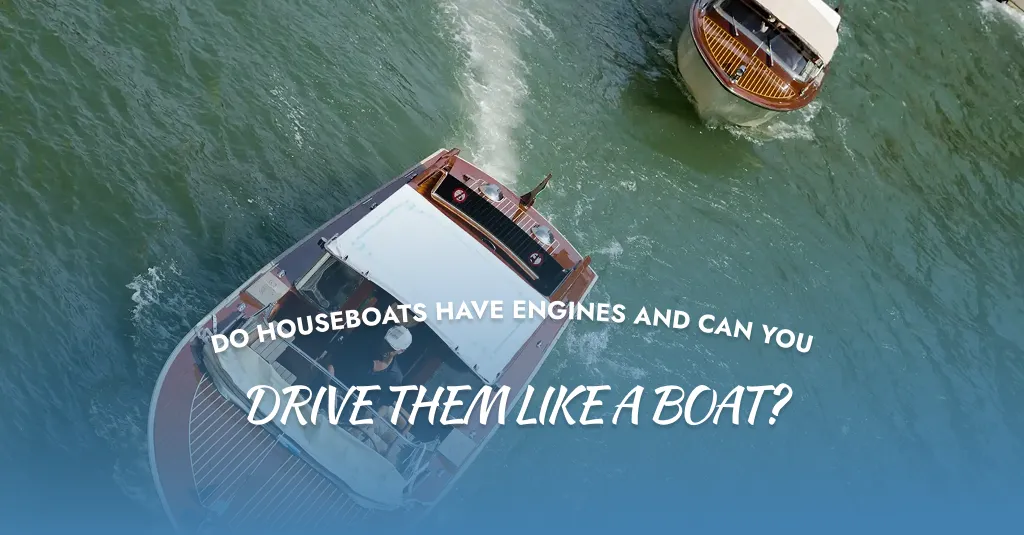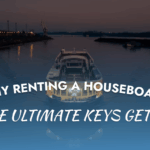
Do Houseboats Have Engines and Can You Drive Them Like a Boat?
Imagine waking up to the gentle rocking of water beneath you, coffee in hand, and a new shoreline waiting to be explored. That’s the charm of houseboat living. But if you’re new to the concept, you might be wondering: Do houseboats have engines? And if they do, can you drive a houseboat like a regular boat?
In this post, we’ll answer those questions and more. Whether you’re dreaming of buying a houseboat, renting one for a vacation, or simply curious about how they operate, this guide will walk you through the essentials.
What Is a Houseboat?
A houseboat is a floating home that can either be permanently docked or fully mobile. Designed for living on the water, houseboats can range from simple cabin-like structures to luxurious floating villas equipped with modern amenities.
Depending on the model and purpose, houseboats may:
-
Stay docked at a marina (stationary)
-
Be towed by another vessel
-
Be fully motorized and driven like a boat
Do Houseboats Have Engines?
Yes! Many Houseboats Are Engine-Powered
Many modern houseboats do have engines, making them self-propelled and capable of navigating lakes, rivers, and even some coastal waters. However, not all houseboats are created equal.
Here are the three common types:
1. Motorized Houseboats (Self-Driving)
These houseboats come with either inboard or outboard motors, making them fully mobile. They’re ideal for people who want to explore waterways while enjoying the comforts of home. You’ll often see these on large lakes or rivers.
2. Stationary Houseboats
These houseboats are moored permanently and don’t come with an engine. They’re essentially floating homes that stay docked at a marina or private pier. They might be moved occasionally using tugboats.
3. Towable Houseboats
Some smaller or vintage houseboats are designed to be towed by another vessel. They might have small trolling motors for repositioning but aren’t intended for long-distance cruising.
Types of Engines Used in Houseboats
When a houseboat does come with an engine, it typically falls into one of the following categories:
Outboard Motors
-
Mounted externally at the rear of the boat.
-
Easier to maintain and replace.
-
Often used on smaller houseboats.
-
Commonly powered by gasoline.
Inboard Motors
-
Located inside the hull of the boat.
-
Better suited for larger houseboats.
-
More complex but offer better power and balance.
-
May run on gasoline or diesel.
Some luxury houseboats may even be equipped with twin-engine setups for better maneuverability and power.
Can You Drive a Houseboat Like a Boat?
Absolutely! With Some Training
If your houseboat has an engine, you can drive it like a traditional boat. However, houseboats are much larger and slower than most recreational boats, so handling them requires a different approach.
Here’s what you need to know:
1. Steering & Maneuvering
-
Houseboats respond slowly to steering inputs due to their size and shape.
-
Turning radius is wider than speedboats or pontoons.
-
Docking and anchoring require practice and often a second set of hands.
2. Speed & Navigation
-
Houseboats are built for cruising, not speed.
-
Average cruising speed: 5–10 knots
-
Suitable for calm inland waters like lakes, rivers, and canals
3. Driving License Requirements
-
In the United States, license requirements vary by state.
-
In most cases, a boater safety certificate is sufficient.
-
Some rental companies provide short training before you take the helm.
What’s It Like to Operate a Houseboat?
Operating a houseboat is similar to driving a slow-moving RV on water. You’ll manage speed, steer with a wheel (helm), and use throttle control for acceleration. Modern houseboats often come with:
-
GPS and navigation systems.
-
Depth finders.
-
Bow and stern thrusters for better docking.
-
Marine radios for communication.
For beginners, it’s recommended to take a boating safety course or hire a captain for the first few trips.
Benefits of a Motorized Houseboat
-
Freedom to Explore
You’re not tied to a dock. Want to anchor by a secluded island? You can. -
Vacation Flexibility
You can change your location on the fly, ideal for extended trips. -
Self-Sufficient Lifestyle
Many come equipped with solar panels, water storage, and waste systems. -
Great for Socializing and Entertaining
Travel with friends or family and enjoy meals, fishing, or water sports.
Things to Consider Before Driving a Houseboat
1. Size and Weight
Houseboats are heavier than regular boats, which affects steering and stopping distances.
2. Weather Conditions
Because of their high profile, houseboats can be affected by strong winds and currents.
3. Docking Challenges
Maneuvering a houseboat into a marina slip can be tricky, practice makes perfect.
4. Fuel and Maintenance
Check the fuel type, tank capacity, and engine maintenance schedule. Diesel engines last longer but require more care.
Where Can You Drive a Houseboat?
Houseboats are most commonly used on:
-
Inland lakes and rivers.
-
Canals and backwaters.
-
Protected bays and coastal areas.
Popular places for houseboating include:
-
Lake Powell, Arizona/Utah.
-
Lake Cumberland, Kentucky.
-
Shasta Lake, California.
-
Murray River, Australia.
-
Kerala Backwaters, India.
Always check local navigation rules and water depth charts before heading out.
Cost of Owning a Motorized Houseboat
Costs can vary widely depending on size, engine type, and amenities. Here’s a breakdown:
-
Small motorized houseboat: $20,000–$50,000.
-
Mid-size with full amenities: $75,000–$150,000.
-
Luxury models: $200,000+
Additional costs include:
-
Fuel.
-
Maintenance.
-
Docking fees.
-
Insurance.
-
Licensing and registration.
Are Houseboats Safe to Drive?
Yes houseboats are generally safe to operate, especially in calm waters. They’re designed with stability in mind, and modern safety features make navigation easier.
To ensure a safe trip:
-
Wear life jackets.
-
Keep a fire extinguisher onboard.
-
Know emergency procedures.
-
Maintain communication via marine radio.
-
Check the weather forecast before departure.
So, do houseboats have engines and can you drive them like a boat? The answer is a definite yes if it’s a motorized houseboat, you can drive it just like a boat, although with more care and slower speeds.
Whether you’re planning a houseboat vacation, looking to live off-grid, or simply curious about the lifestyle, a motorized houseboat offers the best of both worlds: mobility and comfort. Just remember, like any vehicle, it takes a little practice and patience to get the hang of it.
Frequently Asked Questions (FAQs)
Do you need a license to drive a houseboat?
In many states and countries, you’ll need a boater safety certificate or license. Always check local regulations before operating.
How fast can a houseboat go?
Most houseboats cruise at 5 to 10 knots (5–12 mph), making them ideal for slow scenic travel, not speed.
Can houseboats go in the ocean?
Typically, houseboats are not designed for open seas. Some large, well-equipped models can handle coastal waters, but most are for lakes and rivers.
Are houseboats hard to drive?
They’re not difficult, but they do have a learning curve. Due to their size and slower response, beginners should get proper training or start with a smaller model.
Can I live full-time on a motorized houseboat?
Yes! Many people live full-time on houseboats, especially retirees or digital nomads. Just ensure you have the right permits, mooring, and onboard facilities.





